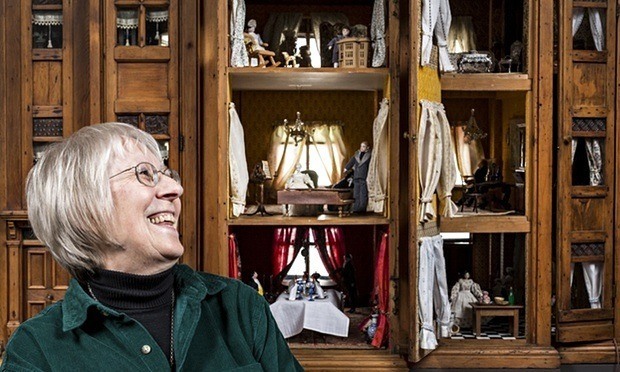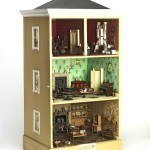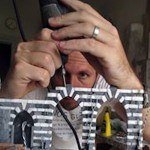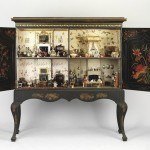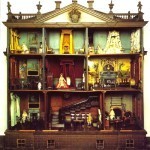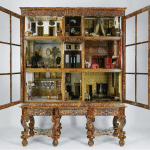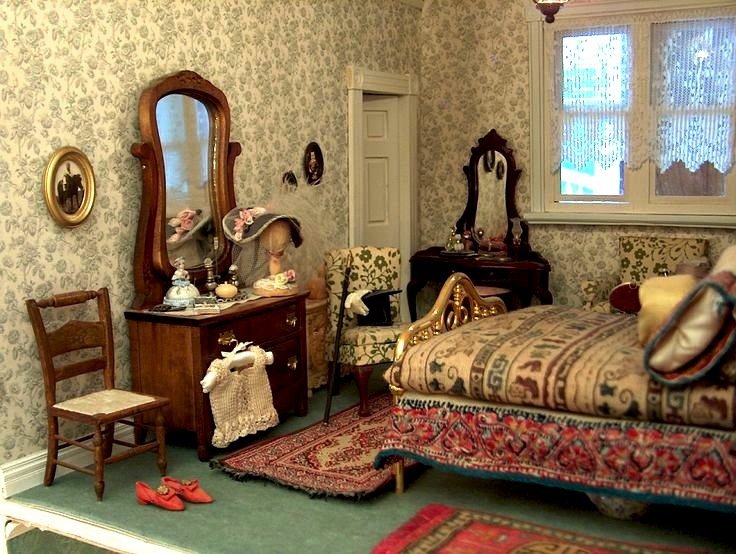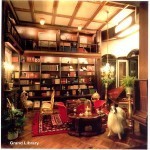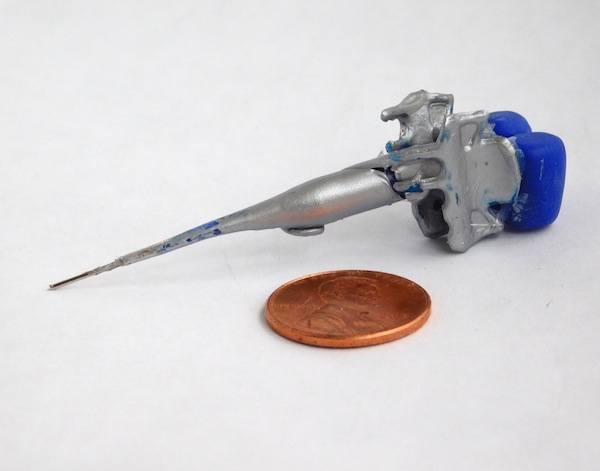
Tate Baby House, on exhibit at the V&A Museum, London
Tate Baby House
Little is known about Mrs Walter Tate, who last owned this house. It was made in Dorset around 1760 and is said to be modeled on a typical 18th century Dorset house.
It is a complex structure that comes apart in several sections so that the owner, usually a lady, could take it on her travels. In those days people often went away for quite long periods of time. Coach travel took up a lot of time and journeys involved careful planning, therefore visits were often long. The baby house was the pride and joy of the mistress of the house, who would often take hers with her. She would take great pleasure in choosing wallpapers and furniture for it.
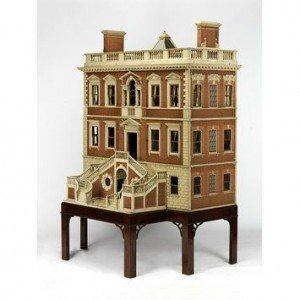
Tate Baby House, on exhibit at the V&A Museum, London
Furnishings
The furniture is not contemporary with the house which was updated in 1830 and at regular intervals afterwards by its owners. In an 18th century house the furniture would have been arranged in a more formal fashion around the walls of the rooms. The windows have lost their glazing bars which would have given them an authentic twelve pane look instead of the two panes that were popular in the 19th century. A painted window on the side of the house shows what the windows should look like.
A Child’s Toy
Children played with the house from time to time … under supervision. Guests would frequently take small presents such as little silver kettles or salt containers for the baby house as a token of thanks for their hostess’s hospitality.
The Tate Baby House is 7.2′ high, 4.10′ wide and 3.6′ deep. It is made of painted wood designed as a classical building of brick with stone coigns and dressings. A balustraded external staircase leads up to the first floor level, and the pedimented entrance door has a Venetian window above. On either side are four windows, two in each story that can open and shut.

Tate Baby House, on exhibit at the V&A Museum, London
Above the cornice is a parapet formed of pilasters and turned balusters, behind which is a glass lantern lighting the staircase hall. An arched entrance in the basement has an oeil de boeuf window on each side. The entrance leads to larders and kitchens. In the sides the top windows are surmounted by drapery swags and a garland of flowers. At each end of the house are chimney stacks.
The house comes apart for ease of handling when traveling. The house has undergone renovation at least three times; part of the roof has been added, the windows changed from the Georgian style to the sash windows favored in the Victorian era, and the stand is an Edwardian addition.
Theabove article is supplied by the Victoria & Albert Museum in London, United Kingdom
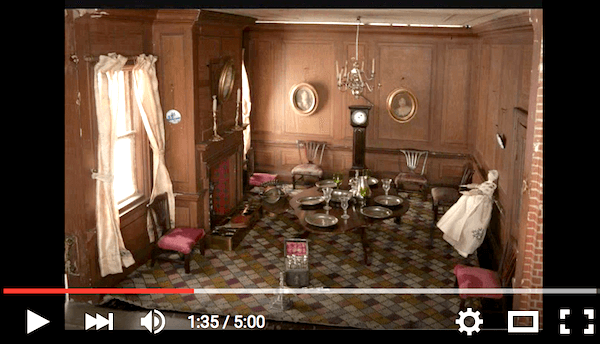
Tate Baby House video by Ileana Ottini
Click on the image to enjoy this video on the Tate Baby House by Ileana Ottini


